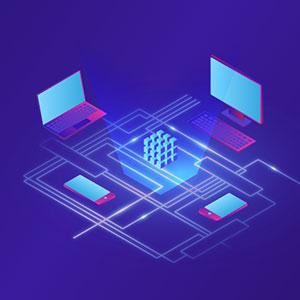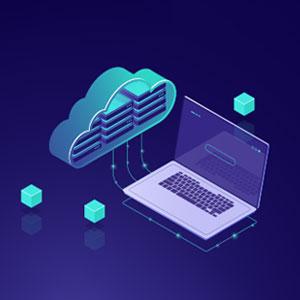Top rated
Data Science 360 Course
Join our 360 Data Science Program now and gain the skills needed to become a Data Scientist/Analyst with this competitive edge that opens doors for career growth! Enrol yourself now.
Industrial Trainers Support
Work on Real Time Projects
One-on-one Sessions
Fully Interactive Online Sessions
360 Data Science Course Overview
Data science is a rapidly emerging field in the digital landscape, and companies are quickly adopting data-driven decisions as part of their digital transformation initiatives. This creates a strong demand for experienced data scientists. With our Data Science 360 Course, you have the opportunity to acquire essential skills while building a strong theoretical foundation alongside hands-on practice. Additionally, this course aims to help you master data science skills, which are crucial in today’s ever-evolving field.
At Brainalyst, we provide a powerful pedagogy led by industry experts, equipping you with the knowledge and adaptability needed to thrive in the field of data science.
By combining effective learning tools with hands-on approaches, this data science course in India becomes invaluable for individuals aspiring to become Data Scientists.
Take a step forward and enroll in our 360 Data Science Certificate Course today. By doing so, you will enhance your comprehensive data science abilities, including visualization, descriptive analytics, predictive modeling, and machine learning. Don’t miss the opportunity to position yourself as a skilled Data Scientist.
Enroll in our 360 Data Science Certificate Course and unlock your potential in the exciting field of data science.
Data Science 360 Curricullum
Chapter 1.1 : Basic Excel
Chapter 1.2 : Basic Programming Elements
Chapter 1.3 : Introduction of Basic
Statistics Chapter 1.4 : Overview of Dashboard
Chapter 1.5 : Business dashboard creations
Chapter 1.6 : Data manipulation using
functions Chapter 1.7 : Data Visualization in Excel
Chapter 1.8 : Introduction to Analytics & Data Science Chapter 1.9 : Create dashboard in Excel – Using pivot controls
- Chapter 2.1 : Data Analytics with VBA
- Chapter 2.2: A look at some commonly used code snippets
- Chapter 2.3 : Programming Constructs in VBA
- Chapter 2.4 : Functions & Procedures in VBA-Modularizing your programs
- Chapter 2.5 : Objects & Memory Management in VBA
- Chapter 2.6 : Error Handling
- Chapter 2.7 : Controlling accessibility of your code – Access Specifiers
- Chapter 2.8 : Code reusability – Adding references and components of
your code - Chapter 2.9 : How VBA works with Excel
- Chapter 2.10 : Key Component of programming language
- Chapter 2.11 : Communicating with your users
- Chapter 3.1 : Intro to RDBMS & Basic SQL
- Chapter 3.2 : Data Based Object Creation (DDL commands)
- Chapter 3.3: Data Manipulation
- Chapter 3.4: Accessing data from multiple tables using Select
- Chapter 3.5: Advanced SQL
- Chapter 4.1 : Getting Started
- Chapter 4.2 : Data handlings & Summaries – I
- Chapter 4.3 : Data handlings & Summaries – II
- Chapter 4.4 : Building Advanced Reports/Maps
- Chapter 4.5 : Calculated Fields
- Chapter 4.6 : Table Calculations
- Chapter 4.7 : Parameters
- Chapter 4.8 : Buildings Interactive Dashboard
- Chapter 4.9 : Building Stories
- Chapter 4.10 : Work with data
- Chapter 4.11 : Sharing work with others
- Chapter 5.1 : Introduction to R
- Chapter 5.2 : Installation of R Software
- Chapter 5.3 : Basics of R Programming
- Chapter 5.4 : Modular Programming – Packages
- Chapter 5.5 : Data Types & Data structures
- Chapter 5.6 : Other Programming Elements
- Chapter 5.7 : Importing & Exporting data
- Chapter 5.8 : Understanding of data
- Chapter 5.9 : Data Preparation/manipulation of data
- Chapter 5.10 : Basic Statistics
- Chapter 5.11 : Data Visualization
- Chapter 5.12 : Shiny
- Chapter 5.13 : Introduction to Modelling
- Chapter 5.14 : Linear Regression
- Chapter 5.15 : Logistic Regression
- Chapter 5.16 : Segmentation
- Chapter 5.17 : Forecasting
- Chapter 5.18 : Machine Learning
- Chapter 5.19 : Deep Learning Basics
- Chapter 5.20 : Text Mining
- Chapter 6.1 : Introduction to the field of Data Science and Python
- Chapter 6.2 : Data Types and Structures of Core Python
- Chapter 6.3 : Role of Modular Programming in Python
- Chapter 6.4 : Vectorized Data Structures: Numpy Array and Pandas Series
- Chapter 6.5 : Data Mining (Basic)
- Chapter 6.6 : Data Mining (Intermediate)
- Chapter 6.7 : Data Mining (Advanced)
- Chapter 6.8 : Data Quality check
- Chapter 6.9 : Data Visualization
- Chapter 6.10 : Descriptive Statistics
- Chapter 6.11 : Understanding Probability Distribution
- Chapter 6.12 : Hypothesis Testing
- Chapter 6.13 : Finding Business Insights using Statistics
- Chapter 6.14 : Combining Data Mining and Statistics
- Chapter 6.15 : Introduction to Predictive Modeling
- Chapter 6.16 : Encoding and Binning
- Chapter 6.17 : Basics of Regression
- Chapter 6.18 : Regression Model Building : Pre-Modeling
- Chapter 6.19 : Regression Model Building : Modeling
- Chapter 6.20 : Regression Model Building – Post Modeling
- Chapter 6.21 : Basics of Classification using Logistic Regression
- Chapter 6.22 : Classification Model Building : Pre-Modeling & Modeling
- Chapter 6.23 : Classification Model Building : Post Modeling
- Chapter 6.24 : Introduction to Machine Learning
- Chapter 6.25 : Decision Trees
- Chapter 6.26 : K Nearest Neighbour
- Chapter 6.27 : Naive Bayes
- Chapter 6.28 : Support Vector Machines
- Chapter 6.29 : Ensemble Learning
- Chapter 6.30 : Creating a UDF to apply all functions in a single go (pipeline)
- Chapter 7.1 : Introduction to Unsupervised Models
- Chapter 7.2 : Heuristic Segmentation
- Chapter 7.3 : Scientific Segmentation : Theory
- Chapter 7.4 : Scientific Segmentation : Application
- Chapter 7.5 : Introduction to Forecasting
- Chapter 7.6 : Forecasting Algorithms
- Chapter 7.7 : Solving Univariate and Multivariate Forecasting Problems in
Python - Chapter 7.8 : Introduction to Text Mining
- Chapter 7.9 : Exploring methods of Data Acquisition and Cleaning
- Chapter 7.10 : Feature Reduction in Text Mining using NLP
- Chapter 7.11 : Creating a Text Classification Model
- Chapter 7.12 : Creating a Text based Segmentation Model
- Chapter 7.13 : Interactive Dashboard in Python
- Chapter 7.14 : Automating Report Generation using Streamlit
- Chapter 7.15 : Deploying a Prediction Model using Streamlit
- Chapter 7.16 : Introduction to Artificial Intelligence
- Chapter 7.17 : Artificial Neural Networks – I
- Chapter 7.18 : Artificial Neural Networks – II
- Chapter 7.19 : Convolutional Neural Networks – I
- Chapter 7.20 : Convolutional Neural Networks – II
- Chapter 7.21 : Recurrent Neural Networks – I
- Chapter 7.22 : Recurrent Neural Networks – II
- Chapter 7.23 : Recurrent Neural Networks – III
- Chapter 7.24 : Self Organising Maps – I
- Chapter 7.25 : Self Organising Maps – II
- Chapter 7.26 : Boltzmann Machine – I
- Chapter 7.27 : Boltzmann Machine – II
- Chapter 7.28 : Boltzmann Machine – III
- Chapter 7.29 : Auto Encoders – I
- Chapter 7.30 : Auto Encoders – II
Who Should Do?
Beginner candidates from diverse academic fields like Engineering, Finance, Mathematics, and Business Management who want to enter Business Analytics should find our course suitable as it provides their first steps into an Analytics/Data Science career path.
FAQ
Course Fee
-
Full Lifetime Access
-
Live Interactive Classes
-
Certificate of completion
Want to Know More?
Yes. When you submit weekly assignments, case studies and projects, you will earn a certificate of completion for this course.
There are no set prerequisites to take the Data Science 360 Course; however, students with basic engineering, finance, mathematics, or business management knowledge would gain much from this course.
Students will acquire knowledge in business analytics, data visualization, programming in Python & R, machine learning, as well as Excel, SQL Server and Tableau.







